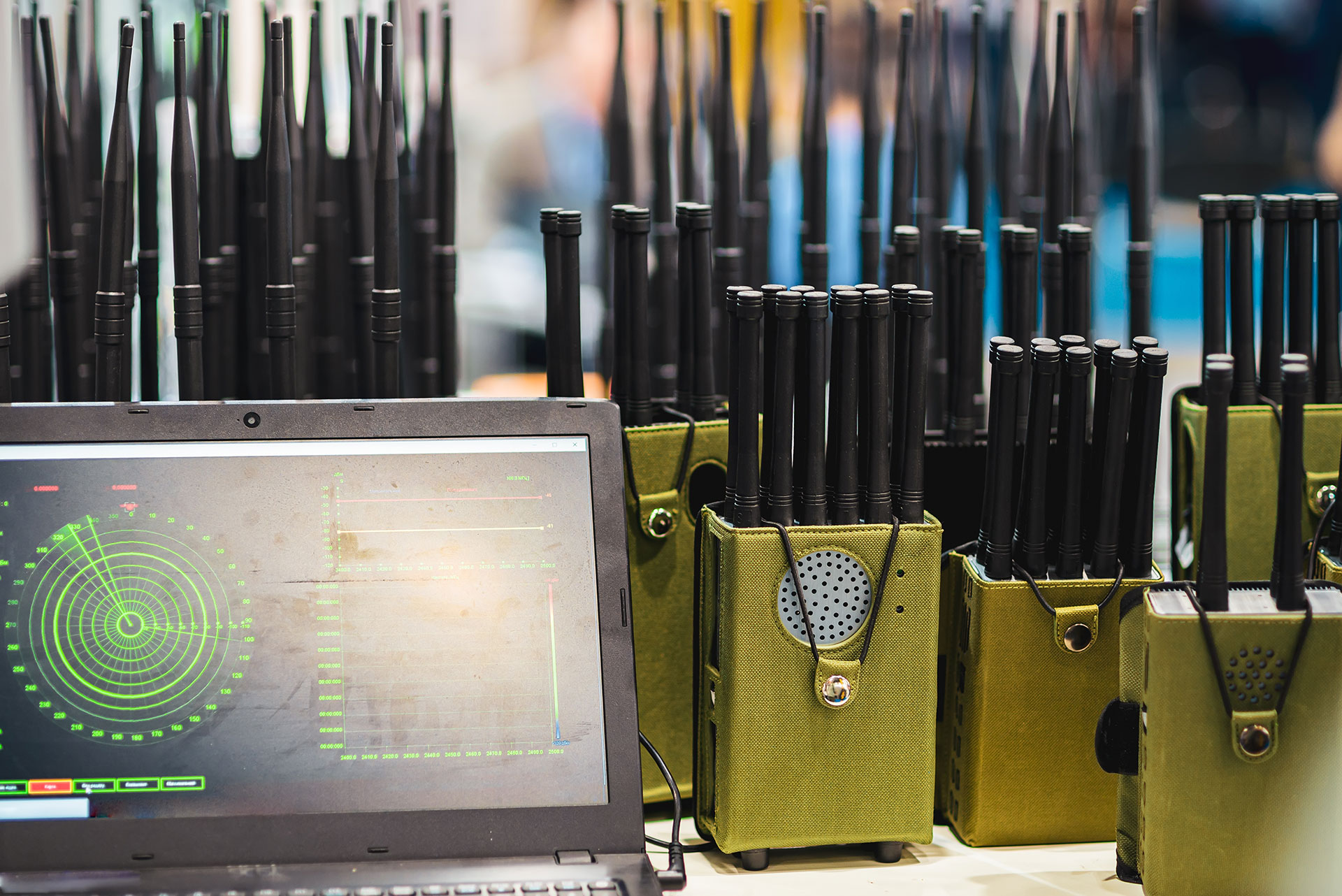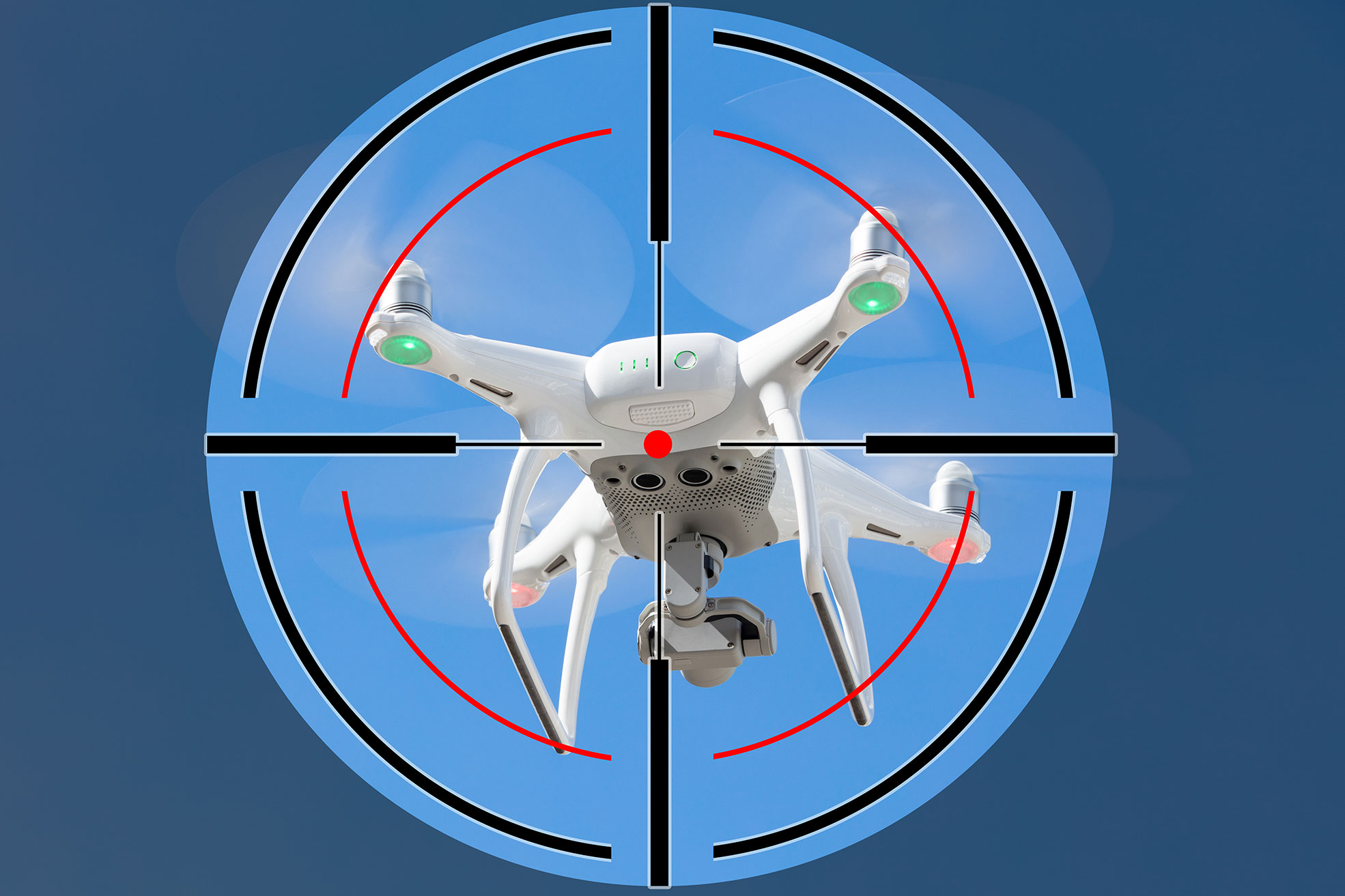How does GNSS jamming work?
GNSS jamming, short for Global Navigation Satellite System jamming, refers to the intentional interference or disruption of GNSS signals. GNSS includes various satellite systems such as GPS (Global Positioning System), GLONASS (Global Navigation Satellite System), Galileo and BeiDou, which transmit signals that are received by GNSS receivers on earth to provide accurate positioning, navigation and timing information.
Jamming occurs when a device intentionally transmits signals that interfere with or mask the received GNSS signals. This can be done in a number of ways, such as transmitting strong radio frequencies in the same frequency range as the GNSS signals or transmitting noise that makes the received signals unreadable.
The signals that the satellites of the global navigation systems send to earth are weak and therefore easy to drown out with a relatively small transmitter.
Why are GNSS signals jammed?
The intention behind GNSS jamming can be manifold.
Military operations
Jamming can be used for military reasons to disrupt or block enemy navigation. Jamming is also used in defense against enemy drones. Many drones use GNSS signals as a reference for their navigation or are controlled via radio signals. If the reception of signals that are important for the drone is disrupted, the drone can remain in place, land slowly or fly back to its take-off point.
Jamming in a civilian environment
Jamming can also occur in civilian environments, for example by thieves trying to prevent stolen vehicles from being tracked, or by companies or drivers who want to prevent unauthorized tracking of their vehicles.
Unintentional jamming
Defective household appliances also sometimes unintentionally transmit jamming signals that are strong enough to prevent the reception of GNSS signals.
What are the consequences of jamming GNSS signals?
The effects of GNSS jamming can be severe. As GNSS is used for many applications such as navigation, timing, disaster management, agriculture, aerospace and financial transactions, jamming these signals can lead to significant problems, from incorrect navigation instructions to serious safety risks.
This can mean that airplanes experience significant problems during take-offs and landings, when navigation needs to be very accurate.
It can also mean that financial transactions are time-stamped incorrectly and the value of the transaction changes.
Jamming can mean that emergency services arrive late at the scene because their vehicles' navigation is not working.
And it can mean that large-scale power outages occur because the synchronization of smart grids - modern intelligent electricity networks with many decentralized participants - depends on the precise time of the satellite systems..
What is being done about jamming?
Various measures are being taken to combat GNSS jamming:
the development of more resistant receivers
the detection and localization of jamming signals
the implementation of laws and regulations to curb the misuse of jamming technologies.
The more accurately a GNSS receiver can detect jamming, the more reliably it can switch to other navigation systems and time sources in the event of a jamming event.








